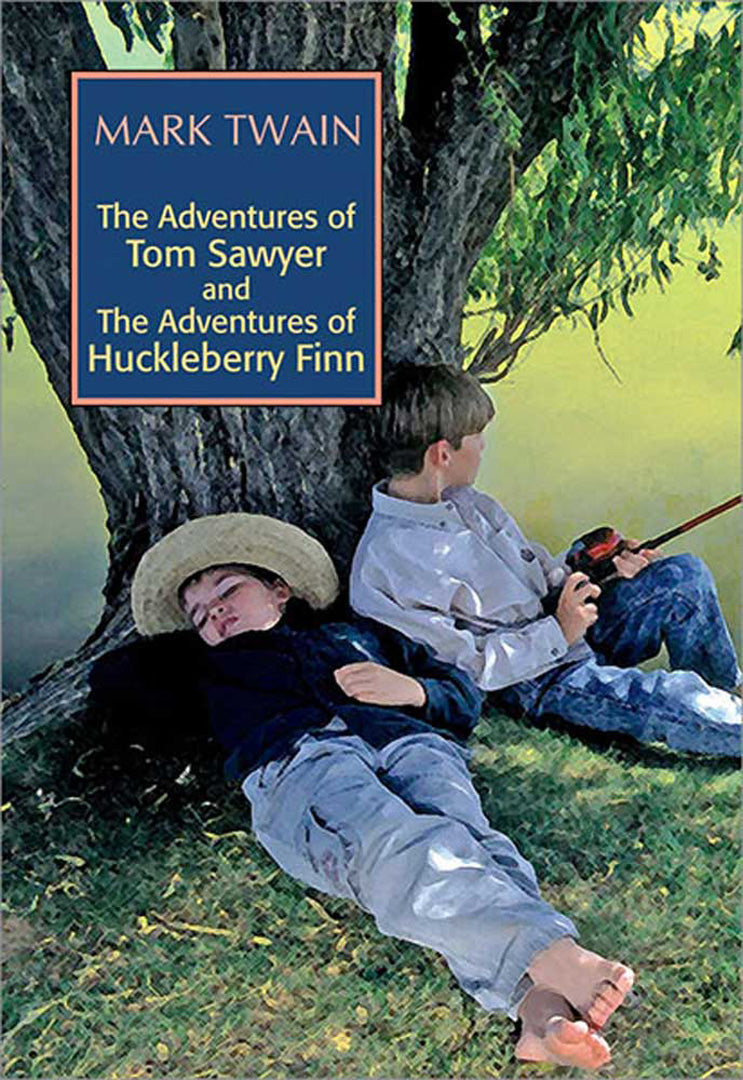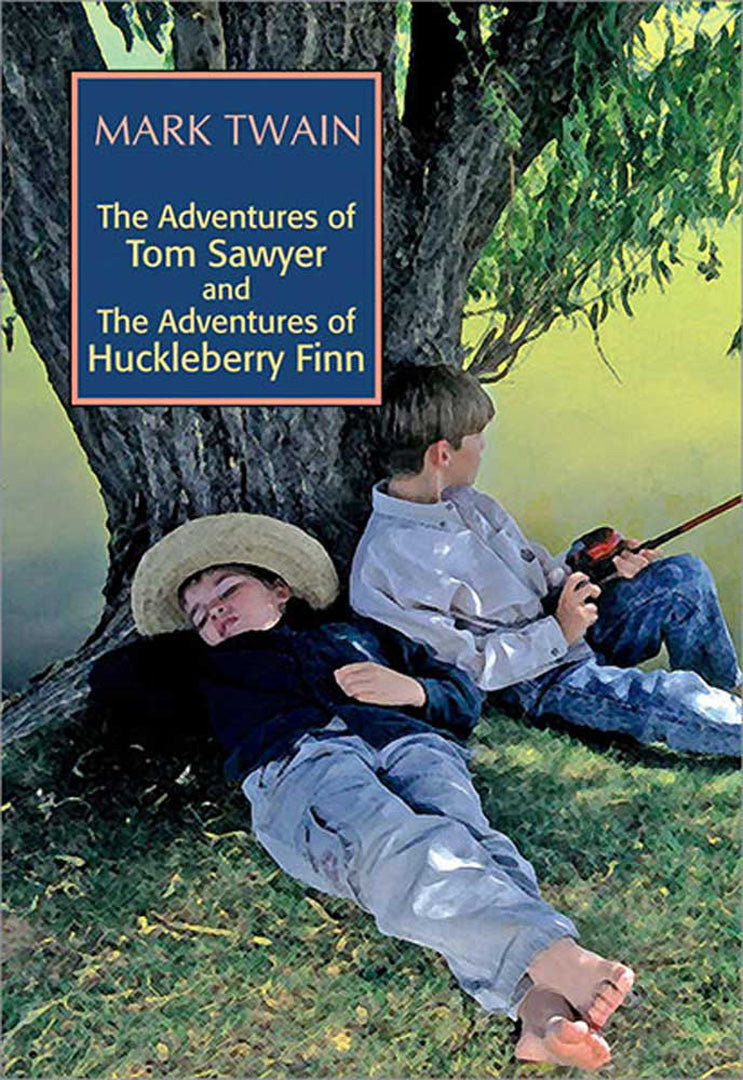The Adventures Of Tom Sawyer And The Adventures Of Huckleberry Finn
The Adventures Of Tom Sawyer And The Adventures Of Huckleberry Finn
Mark Twain
Couldn't load pickup availability
Share

More Information
- ISBN13:
- Publisher: Atlantic Publishers & Distributors (P) Ltd
- Publisher Imprint: Peacock Books
- Publication Date:
- Pages: 274
- Binding:
- Item Weight:
- Original Price:
About The Book
Rated among the most excellent works of American fiction, Mark Twain's classic The Adventures of Huckleberry Finn paints an unforgettable picture of Mississippi frontier life, combining picaresque adventure with challenging satire and great innovative power.
The Adventures of Huckleberry Finn is a brilliant satire on racism, giving a taste of American life in the late 19th century. It is the story of Huck Finn who recounts his adventures after being taken away from the Widow Douglas's by his drunken and brutal father. But he escapes and joins up with a runaway slave, Jim, and together they make their way down the Mississippi on a raft. The picaresque device of a journey serves to introduce a number of interesting events and a variety of colourful characters. Huck becomes a witness of the feudbetween the Grangerford and Shepherdson families. He and Jim are joined by two villainous confidence men, the 'Duke' and the 'Dauphin', who sell Jim into captivity, but at the end of the novel, Tom appears in time to help Huck to rescue him in a characteristically romantic and quixotic manner.
Universally popular as an adventure story, the novel is also an invaluable moral commentary on the nature of 'American experience' and the institution of slavery. Its wonderful story, non-stop action, depiction of youthful innocence, backwoods charm, and twists and turns in the plot are simply spellbinding.
About The Author
MARK TWAIN, the pen-name for Samuel Langhorne Clemens, was born in Florida, Missouri in 1835. He moved with his family to the Mississippi River town of Hannibal when he was four years old. Later he made the scenes of his youth internationally famous in his most popular novels, The Adventures of Tom Sawyer and Adventures of Huckleberry Finn. He left school at the age of twelve, and later travelled throughout the East and Midwest as a journeyman printer. From 1857 to 1861 he was a pilot on the great river Mississippi. He served briefly in the Confederate Army during the Civil War, but his Division deserted and he spent the remainder of the war out West, some of it prospecting for silver in Nevada with his brother Orion, and then working with Bret Harte as a journalist in San Francisco. In 1863 he began using the name Mark Twain, and in 1865 made it famous with his story The Celebrated Jumping Frog of Calaveras County. He quickly established his reputation as one of the best of the South-western humorists.
Clemens moved to New York in 1867 and from that time made the East Coast and Europe his home. Within three years he was called “The People’s Author”; he established himself as one of the most popular platform performers of his time; and he met and married Olivia Langdon, daughter of a rich and socially prominent New York family.
Clemens’ second book, Innocents Abroad, based on a trip to Holy Land he took with a group of American tourists, was published in 1869 and was a great success. In the years immediately following he published Roughing It (1872), his first novel The Gilded Age (a collaboration with Charles Dudley Warner, 1873), Tom Sawyer (1876), A Tramp Abroad (1880), The Prince and the Pauper (1882), Life on the Mississippi (1883), Huckleberry Finn (1884), and A Connecticut Yankee in King Arthur’s Court (1889).
During this period his family grew—a son, Langdon (1870), who lived only nineteen months, and three daughters, Susy (1872), Clara (1874), and Jean (1880)—and his lifestyle became increasingly expensive. In 1871 he built a huge mansion at “Nook Farm” in Hartford, Connecticut. This “dream house” and ultimate sign of success became one of the biggest financial burdens for Clemens during the last half of his career. Operating, redecorating, and entertaining at the Nook Farm estate became so expensive and time consuming that, to reduce expenditure, Clemens ultimately packed the family up and fled to Europe for several years.
While the 1880s represented the artistic and personal bests of Clemens’ career and life, the 1890s were the worst. Never satisfied being just a world famous writer, platform entertainer, and celebrity, in order to make money, Clemens decided to enter business by setting up a publishing company and installing an automated mechanical typesetting machine. Unfortunately both his big business ventures failed and in 1893, he went into personal bankruptcy. On August 18, 1896, an even more unfortunate event took place in the sudden death of his twentyfour year old daughter Susy.
Time somewhat soothed the pain of his daughter’s death and, with the help of Standard Oil tycoon H.H. Rogers, Clemens wrote, lectured and got out of bankruptcy but became increasingly alienated from the good-humoured wit on which his popularity was based. His writings became increasingly bitter over the last two decades of his life. Severe pessimism and dissatisfaction reflected in his books The Man that Corrupted Hadleyburg (1900) and What Is Man? (1906) as well as in much of his posthumously published work.
His wife died in 1904 and his second daughter in 1909. While his personal life was devastated, his professional life carried him through. He continued to lecture widely, in the U.S.A. and abroad, though his opinions were often controversial. He was extremely proud of the honorary doctorate of letters awarded to him by Oxford University in 1907. He died in 1910 leaving a wealth of unpublished material, which included The Mysterious Stranger (1916) and Letters From the Earth (1962). His Autobiography was published in 1924.

